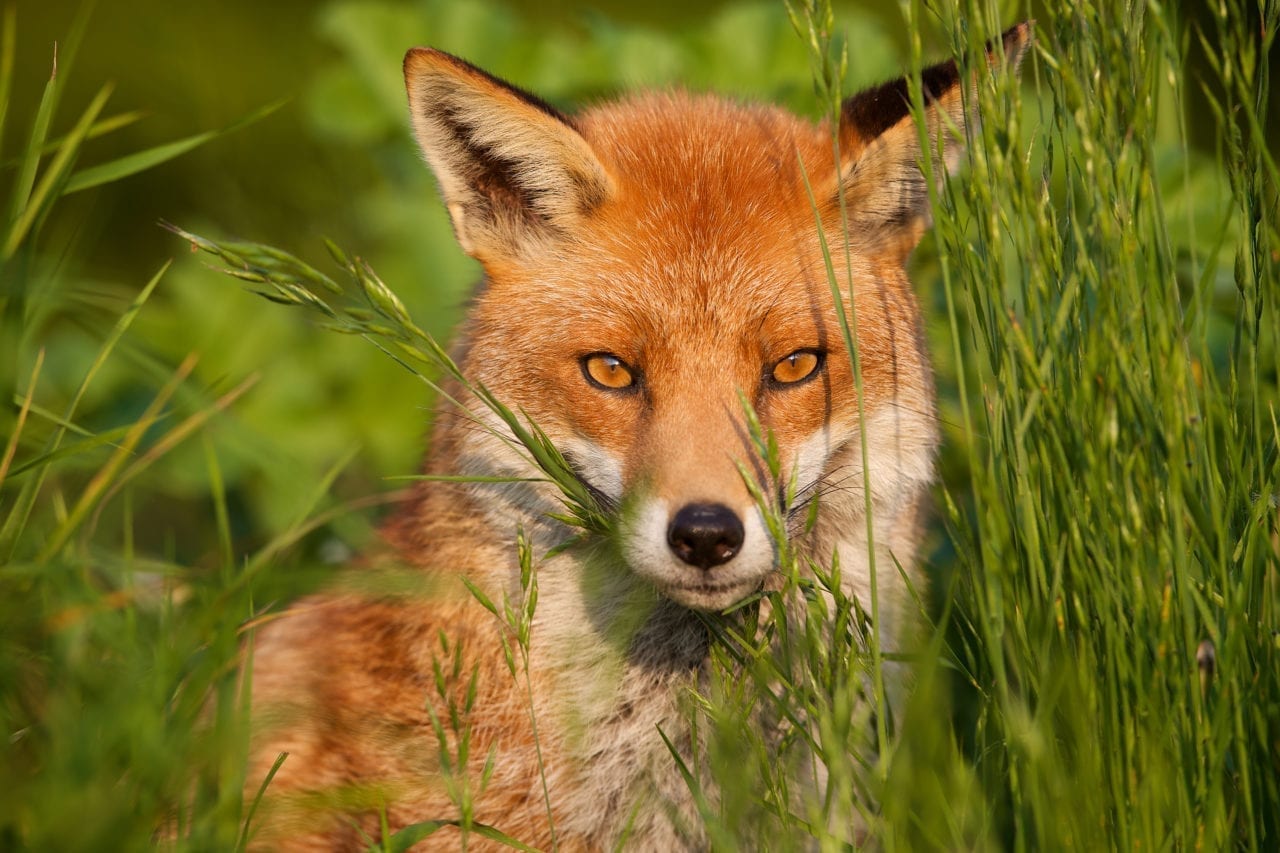Red Fox
Llwynog Coch. Vulpes vulpes
The red fox is our only wild canine species, a relative of the domestic dog and wolf. Foxes are historically associated with countryside and woodlands but will thrive in almost all habitats, including urban environments. They live in underground dens, called earths, in social, family groups. They mate in winter and the vixen (female) has one litter of pups a year. The average litter size is 2-6, the dog (male) fox hunting and providing food for the mother and their offspring. Foxes have a very varied diet, eating berries, fruits, sedges and grasses besides mice, rabbits, squirrels, birds and earthworms. They scavenge as well as hunt. Their ability to scavenge is one of the reasons they have adapted so well to urban environments, eating food humans have discarded.
Literature and culture presents them as the trickster, cunning and wily, but also as helpful and wise. Disney’s foxy Robin Hood steals from the rich and gives to the poor, whilst Roald Dahl’s Fantastic Mr Fox steals chickens, turkeys (and cider). Reynard, the fox of Dutch mythology, deceives his fellow creatures for his own gain, whilst in The Hounds of the Morrigan, Cooroo the red fox risks his life to protect children being chased through a snowstorm by an enchanted hunt.
Status at Cambrian Wildwood: Present

